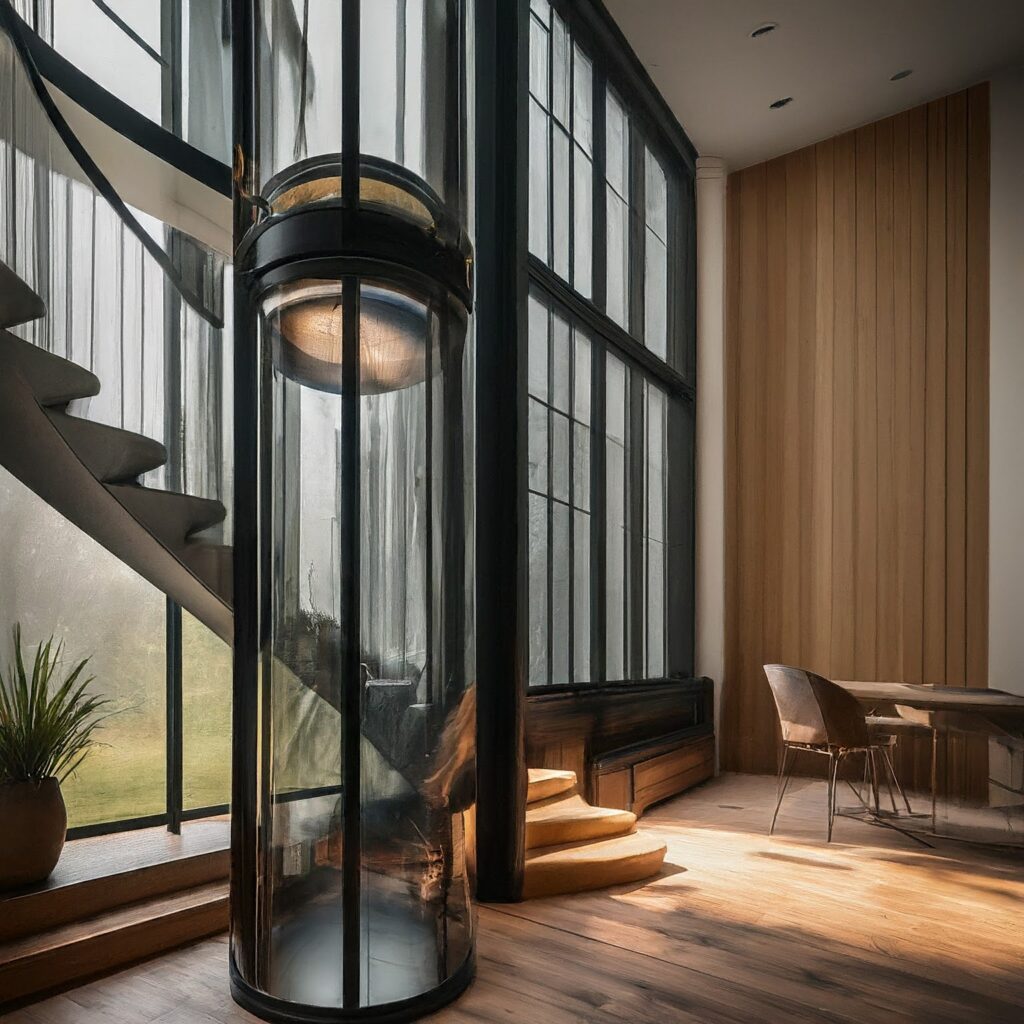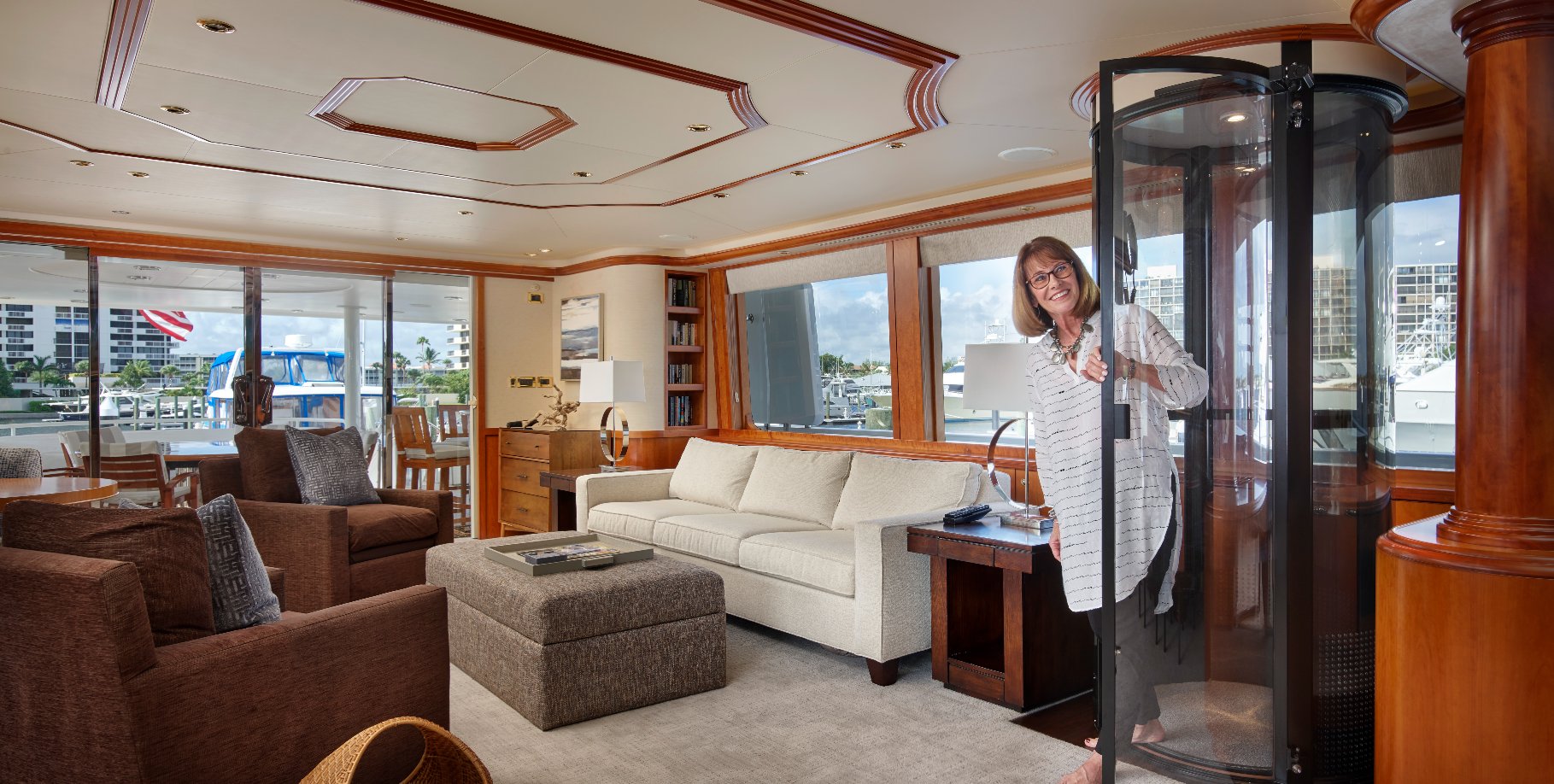Thinking about adding an elevator to your home but worried about space constraints? Fear not! Small residential elevators, also known as home lifts, have become increasingly popular for their ability to enhance accessibility and convenience without sacrificing a significant amount of square footage.
We will study the smallest residential elevators, equipping you with the technical details and key considerations to make an informed decision for your home.
Types of Small Residential Elevators
There are two main types of small residential elevators that dominate the market:
- Shaftless Elevators: These innovative lifts eliminate the need for a dedicated elevator shaft, making them ideal for existing homes. They typically travel along a single track installed directly through the floor openings.
- Vacuum Elevators: These futuristic marvels utilize pressurized air to travel within a transparent tube. Their compact design makes them perfect for tight spaces, offering a panoramic view during use. Click Here To Check The World’s Smallest Home Elevator
Technical Specs to Consider:
- Weight Capacity: Small residential elevators typically have a weight capacity between 350 lbs (159 kg) to 700 lbs (318 kg). Ensure the chosen model can accommodate your needs and the weight of any mobility aids you might use.
- Travel Height: These elevators are designed for shorter distances, usually catering to two or three floors with a maximum travel height of around 50 feet (15 meters).
- Speed: Small residential elevators prioritize safety over speed, typically travelling at 30 feet per minute (9 meters per minute).
- Footprint: Both shaftless and vacuum elevators boast a small footprint, typically occupying less than 7 square feet of floor space.
Beyond Size: Important Features to Look For
While size is a crucial factor, several other features contribute to a successful home elevator installation:
- Door Options: Swing doors, sliding doors, and automatic doors are available. Consider ease of use and space limitations when making your choice.
- Safety Features: Look for elevators equipped with emergency stop buttons, automatic shutoff in case of power outages, and overload sensors.
- Customization: Many manufacturers offer a variety of finishes for the walls, flooring, and controls to complement your home’s décor.
- Cost: Small residential elevators are generally less expensive than traditional elevators due to their size and simpler installation process. However, expect to invest anywhere from $15,000 to $40,000 depending on the model, features, and customization options.
Final Considerations: Making the Perfect Choice
Here are some additional points to ponder before purchasing a small residential elevator:
- Local Regulations: Building codes in your area might have specific requirements for home elevators. Be sure to research and comply with any regulations before installation.
- Professional Installation: Installing a home elevator requires expertise. Opt for a reputable company with experience in your area for a seamless and safe installation process.
- Long-Term Maintenance: Factor in the ongoing maintenance costs associated with your chosen elevator model.
The PVE30: World’s Smallest Home Elevator – A Perfect Space-Saving Solution

Living in a charming yet compact home shouldn’t limit your accessibility needs. Introducing the PVE30, proudly recognized as the world’s smallest residential elevator. This innovative marvel by PVE tackles space constraints head-on, offering a comfortable and stylish solution for navigating multiple floors.
Imagine a single-passenger elevator with a diameter of just 30 inches, fitting seamlessly through most standard doorways. That’s the magic of the PVE30. It eliminates the need for a bulky elevator shaft, hoistway, or machine room, making it ideal for retrofitting existing homes or incorporating into new construction projects with limited space.
Despite its compact size, the PVE30 packs a punch. Here’s what makes it a compelling choice:
- Unmatched Space Efficiency: The 30-inch diameter allows for installation in tight spaces, solving accessibility challenges without sacrificing valuable floor area.
- Impressive Capacity: Don’t be fooled by its size. The PVE30 boasts a weight capacity of 350 lbs (159 kg), accommodating most users and everyday essentials.
- Effortless Travel: Enjoy a smooth and quiet ride with a travel speed of 30 feet per minute (9 meters per minute) and a maximum rise of 50 feet (15 meters) across two to five stops.
- Panoramic Views: The transparent tube construction transforms every ride into a mini-adventure, offering a unique perspective of your home.
- Eco-Friendly Operation: The PVE30 utilizes a 220V power supply, similar to your washer and dryer, making it energy-efficient and cost-effective.
- Quick Installation: Unlike traditional elevators, the PVE30 can be installed in as little as two to three days, minimizing disruption to your home.
The PVE30 is more than just a space-saving marvel; it’s a testament to innovative design and engineering. Constructed from high-quality polycarbonate and aluminum, it prioritizes safety and durability. Additionally, it comes equipped with standard features like automatic LED lighting, a ventilation fan, and an emergency safety brake system, ensuring a comfortable and secure experience.
Whether you’re looking to enhance your home’s accessibility or simply add a touch of modern elegance, the PVE30 is a compelling option. This world’s smallest home elevator is big on functionality and style, proving that even compact spaces can offer a smooth and comfortable ride.
Frequently Asked Questions (FAQs) About Small Residential Elevators
Having explored the different types of small residential elevators and the advantages of pneumatic models, let’s delve into some frequently asked questions to ensure you make an informed decision:
Can a small residential elevator be installed in my existing home?
The answer depends on the type of elevator and your home’s layout. Shaftless elevators require minimal modifications, while vacuum elevators might necessitate some structural adjustments depending on the weight capacity and desired location. Consulting with a professional installer is crucial to assess your specific situation.
How long does it take to install a small residential elevator?
Installation timelines vary depending on the complexity of the project. Typically, a shaftless elevator installation can be completed within a week, while a vacuum elevator might take slightly longer due to potential structural adjustments.
Do I need a special electrical outlet for a small residential elevator?
Both shaftless and pneumatic elevators typically operate on standard household electricity (110V or 220V). However, it’s always best to consult with a qualified electrician to ensure your home’s electrical system can handle the additional load.
How much maintenance is required for a small residential elevator?
Regular maintenance is essential for the safe and smooth operation of your home elevator. The frequency and specific maintenance tasks will vary depending on the model. Generally, expect annual inspections and occasional lubrication of components.
Are small residential elevators energy-efficient?
Modern small residential elevators are designed with energy efficiency in mind. Vacuum elevators, in particular, boast a reputation for low energy consumption due to their utilization of pressurized air.
What happens if there’s a power outage?
Most small residential elevators come equipped with backup battery systems that ensure safe descent to the ground floor in case of a power outage.
Are small residential elevators safe?
Safety is paramount! Look for elevators certified by reputable organizations and equipped with essential safety features like emergency stop buttons, automatic shut-off during power outages, overload sensors, and phone communication systems.
Can I customize a small residential elevator?
Absolutely! Many manufacturers offer a variety of finishes for walls, flooring, and control panels, allowing you to customize the elevator to seamlessly blend with your home’s décor.
Is it noisy to have a small residential elevator in my home?
Shaftless elevators utilizing screw and nut drive systems might generate some noise. Pneumatic elevators, on the other hand, are known for their quieter operation due to the use of pressurized air.
How much value does a small residential elevator add to my home?
While the exact value increase can vary depending on your location and market, a small residential elevator can undoubtedly enhance your home’s accessibility and appeal to a wider range of potential buyers, potentially increasing its resale value.
Is the PVE30 a good option for my home?
The PVE30, known as the world’s smallest pneumatic home elevator, is a great choice for residences with limited space. Boasting a diameter of only 30 inches, it can fit through most standard doorways and requires minimal floor space. However, it’s crucial to consider the weight capacity (350 lbs) and travel height (maximum of 50 feet) to ensure it meets your specific needs. Consulting with a qualified dealer who can assess your home and recommend the most suitable model, including the PVE30 or other options, is highly recommended.








